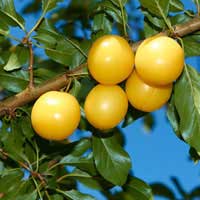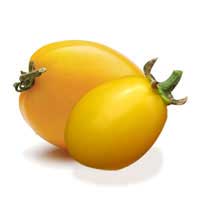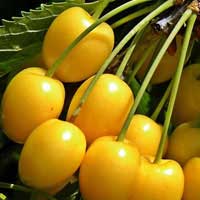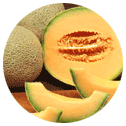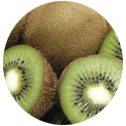 Full List of Fruits
Full List of Fruits  Yellow plum fruit
Yellow plum fruitYellow plum fruit
![]() Introduction of Yellow plum fruit
Introduction of Yellow plum fruit
Scientific name - Ximenia Americana
Indigenous to the tropics, Ximenia Americana is commonly identified by its regional name known as yellow plum or sea lemon. This small sprawling tree of woodlands has its roots from the family Olacaceae. Having strong smell of almonds, the leaves of yellow plum are oval shaped and bright green in color with the flowers being pale in color. Having said that, there is no particular fragrance of the fruit, but the flowers have a concentrated lilac aroma. With a pleasant plum like flavor, the fruits are orange-red or lemon-yellow in color.
The young leaves of the fruit are cooked and consumed as a vegetable in Asia. The sweet-smelling pink, yellow-green and white flowers occur in branched inflorescences are borne on pedunculate axillary racemes or umbels; pedicles 3-7 mm long, both peduncles and pedicles glabrous. With no trichomes, the fruits of Ximenia are globose to ellipsoidal drupes that are just about 3 cm long, 2.5 cm thick. At its younger stage they are green in color and becomes yellowish (or, rarely, orange-red) when ripe, containing a juicy pulp. Coming to the seed of the fruit, they are woody, light yellow, up to 1.5 cm long, 1.2 cm thick with a full of fat core and a fragile shell.
![]() Nutritional Value of Yellow plum fruit
Nutritional Value of Yellow plum fruit
| Energy Value | 1506 |
| Phosphorus | 1674 |
| Calcium | 29 |
| Magnesium | 459 |
| Iron | 366 |
| Potassium | 41791 |
Notorious for a wide range of uses, the fruit is known to quench thirst and is used in making jams, jellies or an intoxicating drink, however they are also consumed raw. After thorough cooking, the young leaves of the fruit are fit to be eaten. Seeds of the fruit are cooked, powdered and mixed with sago to make bread. The tree's bark, fruit, and leaves have many uses in local medicine for people and animals. The hard and dense wood is used as firewood.
Yellow plum fruit is a type of fruit that has many uses. It is a great source of vitamins, minerals, and other nutrients, making it a nutritious snack. It is also high in fiber, which helps to regulate digestion and can lower cholesterol.
In terms of culinary uses, yellow plums can be used in a variety of ways. They can be eaten fresh, added to salads and smoothies, used in baking, and cooked in savory dishes. The tartness of the plum makes it a great addition to sweet and savory dishes. It can also be used to make jams, jellies, and sauces.
Yellow plums are also known for their many health benefits. They are high in antioxidants and vitamins A, C, and K, which can help to reduce inflammation, protect against oxidative stress, and help the body fight off illness. They are also high in potassium, which helps to regulate blood pressure and can reduce the risk of heart disease.
In addition to its culinary and health benefits, yellow plums also have beauty benefits. The antioxidants in the fruit can help to reduce wrinkles, improve skin tone, and reduce the signs of aging. It can also be used as a natural exfoliant, helping to remove dead
![]() Health benefits of Yellow plum fruit
Health benefits of Yellow plum fruit
The leaves and twigs of the tree apart from being used as a laxative and eye lotion, they are used to treat:
 Fever
Fever
 Colds
Colds
Roots are used for headaches (especially in children), angina, and as a poison remedy. In addition, they are also used for skin problems, headaches, venereal disease, sleeping sickness, oedema, leprosy, haemorrhoids, sexually transmitted diseases, guinea worm and act as an antidote to poison. Routine constipation can also be treated with the help of this fruit.
![]() Propagation of Yellow plum fruit
Propagation of Yellow plum fruit
Yellow plums are propagated by planting the seed in a suitable soil with adequate moisture and nutrients. The seed should be planted shallowly and covered with a thin layer of soil. Once the seed has germinated, the young sapling should be transplanted to a permanent location.
The sapling should be planted in a sunny location and the soil should be made up of a mixture of sand, loam and organic matter. The sapling should be watered regularly and mulched around the base to help retain moisture. Pruning can be used to encourage a strong and healthy growth.
The fruit should be harvested when it has turned yellow and has a sweet smell. The fruit can be eaten fresh or used in cooking. For cooking, the fruit can be boiled, stewed, or made into jams and jellies.
Yellow plum is a hardy fruit that is relatively easy to propagate. If given the right conditions, it can produce a good yield of healthy fruit. The fruit can be stored for several months, so it can be a great addition to your pantry.











